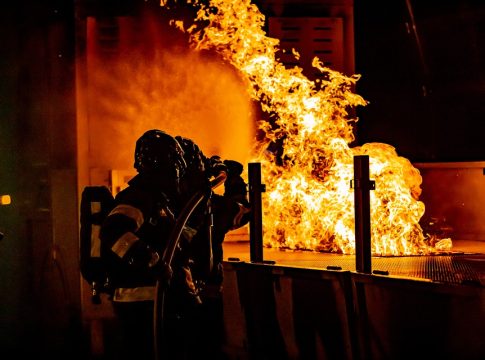Natural disasters can strike without warning, and being caught off guard can have dire consequences. With climate change amplifying the frequency and intensity of these events, enhancing your preparedness is more important than ever. This guide covers seven essential steps you can take when faced with a natural disaster, providing you with the knowledge to keep yourself and your loved ones safe. Whether it’s a flood, hurricane, or wildfire, your action plan starts here.
1. Stay Informed
Staying informed is your first line of defense during a natural disaster. Use multiple channels to receive timely updates—TV, radio, and social media can provide critical information about alerts and changes in the situation. Downloading apps specific to weather alerts or local emergency services can ensure you get real-time notifications on your mobile device. Make it a habit to monitor local news sites or government resources so you have the latest updates on conditions in your area.
2. Create an Emergency Plan
Having a clearly outlined emergency plan can be a lifesaver. Sit down with your family and decide on a meeting point, communication methods, and evacuation routes. Discuss where to go, especially if you live in an area prone to fires or floods. Involve everyone in your household, including children, to ensure they understand the plan. Regular practice through family drills will help everyone to react swiftly when the time comes.
3. Assemble an Emergency Kit
An emergency kit might seem like a simple task, but it can be crucial in life-threatening situations. Your kit should include essentials such as water, non-perishable food, medications, first-aid supplies, flashlights, batteries, and a multi-tool. Don’t forget important documents (such as ID and insurance papers) and some cash in case ATMs are not operational. Aim for a kit that can sustain you and your family for at least 72 hours, giving you a buffer until help arrives.
4. Secure Your Property
Taking steps to secure your property can significantly mitigate damage during a natural disaster. If you know a storm or flood is coming, make sure to reinforce windows, clear gutters, and secure outdoor items that could turn into projectiles. For those in wildfire-prone areas, maintain defensible space around your home by clearing brush and debris. This proactive approach can help protect your home, possibly reducing your insurance claims later on.
5. Know When to Evacuate
Sometimes the best option during a natural disaster is to evacuate. Understand the signs that it’s time to leave—if local authorities issue a mandatory evacuation order, take it seriously. Having multiple routes mapped out ahead of time ensures you won’t be scrambling when the order comes. Keep your gas tank full and prepare your vehicle with essential items like your emergency kit, food, and water. Knowing when to leave saves time and minimizes risks for you and your family.
6. Stay Calm and Follow Instructions
In the chaos of a natural disaster, remaining calm is vital. Panic can lead to rash decisions that put lives at risk. Trust local authorities and follow their guidance. If you have run drills with your family, you should have a clearer idea of how to act quickly and effectively. Communicate clearly with your family members, helping them stay calm and focused. Relying on each other and keeping lines of communication open can make navigating a crisis slightly easier.
7. Assess the Situation
Once the immediate danger has passed, it’s essential to carefully assess your surroundings before taking further action. Keep an eye out for hazards such as downed power lines, structural damage, and gas leaks. Avoid entering your home until you’re sure it’s safe. If you notice any significant dangers, contact emergency services immediately. Knowing how to evaluate the situation can help prevent further injuries or property damage.
Be Prepared – Always
Preparation is the keyword when it comes to natural disasters. The tips outlined in this guide can significantly impact your safety and well-being in times of crisis. From staying informed to assembling an emergency kit, these seven steps encompass the essentials for preparing for any natural disaster you might face. Now that you’re equipped with this ultimate preparedness guide, you can ensure that you and your loved ones are ready for anything.
What steps have you taken to prepare for natural disasters? Feel free to share your thoughts or experiences in the comments!

Covers viral stories, pop culture, and breaking celebrity news.
Bio: Jamie has a sharp eye for what’s buzzing online, tracking social media trends and entertainment headlines around the clock.

